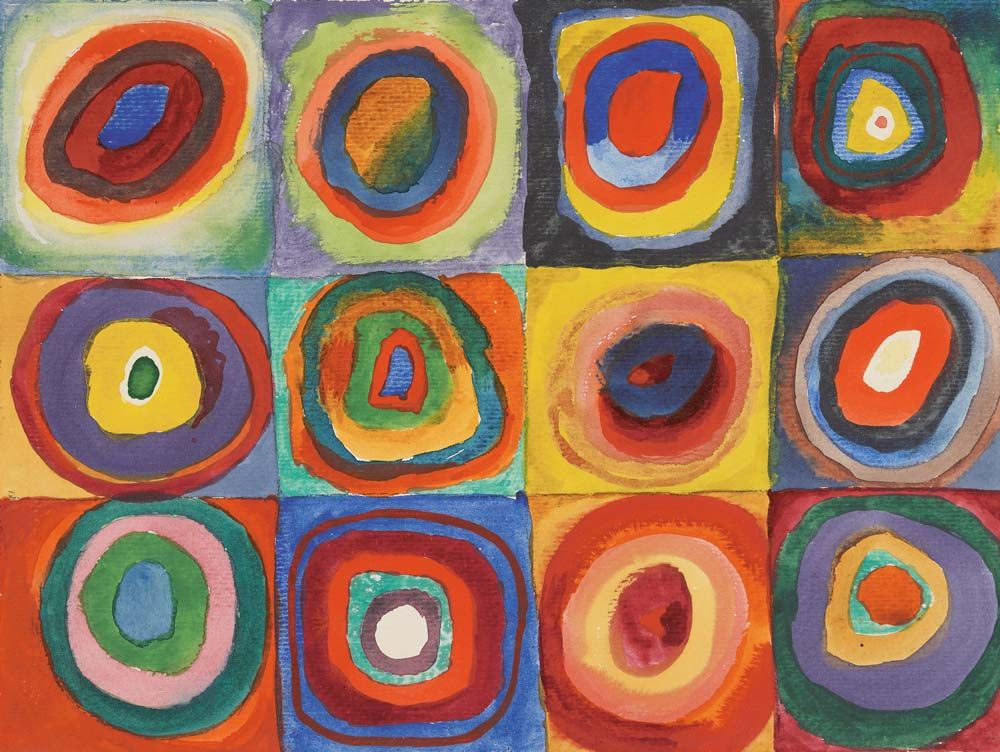log in
Enter site
Login to use Arthive functionality to the maximum
Color study: squares with concentric circles
Wassily Kandinsky • Graphics, 1913, 23.8×31.4 cm
Description of the artwork «Color study: squares with concentric circles»
In 1913, Wassily Kandinsky is, without a doubt, is recognized in art circles as a master. Despite the relatively short career of the painter, his shoulder is already a lot of achievements: published the book "concerning the spiritual in art", creation group "Phalanx", then a New artistic enterprises, and finally The "blue rider". In the two years prior to that, he writes the first fully abstract painting gradually completely abandoning figurative painting. And in 1912 in Berlin, held his first solo exhibition. And although "impressions", "improvisations" and "compositions" was hailed by critics pretty cool, the name Kandinsky from this point begins to sound around the world.
Despite the recognition and popularity, the artist has not ceased to experiment, transform and perfect your technique. So in 1913, he writes "Squares with concentric circles" a kind of study of interaction of different colors and shapes. In a sense, this work prefigures the birth of the later post-war works by Kandinsky and symbolizes a transition from the emotional and chaotic early abstractions to strict geometrical "bauhausstil" period.
Using the simplest forms of Kandinsky explores the impact of different colors on the viewer and the emotional response that these colors evoke. According to the artist, all the colors are able to exert a dual effect. The first is a simple physical impact on the viewer's eyes similar to the pleasant sensations, for example, from the delicious food. The second effect is much more profound, spiritual: this is what Kandinsky called "soul vibration", internal resonance caused by the touch of color directly to the inner essence of a person.
Author: Eugene Sidelnikov
Despite the recognition and popularity, the artist has not ceased to experiment, transform and perfect your technique. So in 1913, he writes "Squares with concentric circles" a kind of study of interaction of different colors and shapes. In a sense, this work prefigures the birth of the later post-war works by Kandinsky and symbolizes a transition from the emotional and chaotic early abstractions to strict geometrical "bauhausstil" period.
Using the simplest forms of Kandinsky explores the impact of different colors on the viewer and the emotional response that these colors evoke. According to the artist, all the colors are able to exert a dual effect. The first is a simple physical impact on the viewer's eyes similar to the pleasant sensations, for example, from the delicious food. The second effect is much more profound, spiritual: this is what Kandinsky called "soul vibration", internal resonance caused by the touch of color directly to the inner essence of a person.
Author: Eugene Sidelnikov


